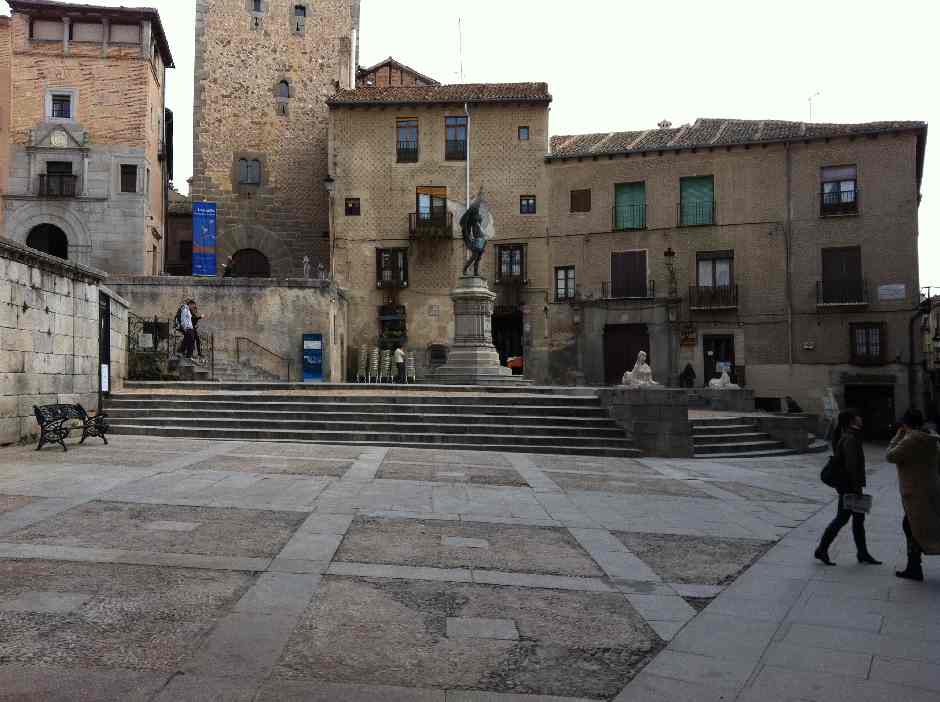
Segovia is much more than its famous aqueduct and you can discover it through an interesting break. Tour of Segovia with Chapín Group.
The best-known postcard of Segovia usually pictures its ancient aqueduct, but there is much more to discover in Segovia. This Castilian-Leonese city is one of the most historic towns in Spain. Roman art, Gothic, environmental routes … Segovia is a destination to live and to enjoy. Today we are going to take a tour of Segovia with Chapín Group
What to see in Segovia?
Roman aqueduct: it would be absurd to start our journey from another place than the Roman aqueduct as it is one of the most magnificent and spectacular Roman works that the Empire left in Spain. This aqueduct drove water from the mountains to the city and since 1985, UNESCO has included “The ancient city of Segovia and its Roman aqueduct” in its list of World Heritage Cities.

El Alcázar: fortified palace, royal residence since Alfonso VIII, this fortress was embellished by the Trastámara with beautiful plaster friezes and Mudejar coffered ceilings. On the first floor, you find the Military Historical Archive and on the ground floor, around the Courtyard of Arms and the Clock Courtyard, lies a museum in which the life of the court was taking place. The rooms are distributed as the Ajimeces Room, Solio Room, Galera Room, Las Piñas Room, Royal Chamber, Kings Room, Cordon Room, Chapel, Weapons Room.
Real street: The Royal Street will take us to the Plaza Mayor through the Casa de los Picos. The facade of this house was built in the early sixteenth century, and its functionality is closer to the medieval warrior utility rather than the civil aesthetic of the Renaissance. This street is divided into several sections: Cervantes, formerly called Calle Real del Carmen, by the old convent whose plot today occupies a banking entity; Juan Bravo, in memory of the Segovian communer; Plazuela del Corpus, by the old Major Synagogue, today church-convent of Corpus Christi; and finally, Isabel la Católica, from where we end at the Plaza Mayor.
The Puppet Museum is a curious museum located in the Romanesque Puerta de Santiago where the city was accessed from Arévalo and Medina del Campo. It houses a charming collection of 38 puppets donated by the famous puppetist of Cádiz, Francisco Peralta. The body of the dolls is made of wood, bandages, plaster and rabbit tail; Recycled household materials, cloth and metal elements are added. More information at http://titeres.turismodesegovia.com/
The Cathedral and Plaza Mayor are the soul of the city. The Plaza Mayor is framed by the beautiful pinnacles of the apse of the Cathedral of Segovia. Of late Gothic style, it began to be built in 1525, with the selfless collaboration of the Segovians, under the direction of the architects of the Gil de Hontañón family. It replaced the Old Cathedral located in the current gardens of the Alcazar and destroyed during the War of the Communities in 1520.
Medina del Campo Square: Back to Calle Real, the Plaza del Medina del Campo offers a large architectural complex reminiscent of some Italian squares. The imposing church of San Martín or La Casa del XV century, former palace of the Tordesillas example of urban noble residence.

Environmental route: Segovia is framed between the Valley of the Eresma and the Valley of the Clamores. Around the city there are many places to enjoy nature. The Clamores Valley begins in what was the old Morería, today San Millán neighbourhood, lies just 5 minutes from the Aqueduct. We would start the route in what we call La Hontanilla, next to the Santi Spiritu bridge. Bridge and valley without river, since it was buried in the middle of the 20th century.
More information about Segovia at Segoviaturismo.es
All the information of Chapín Group at https://grupochapin.com/
